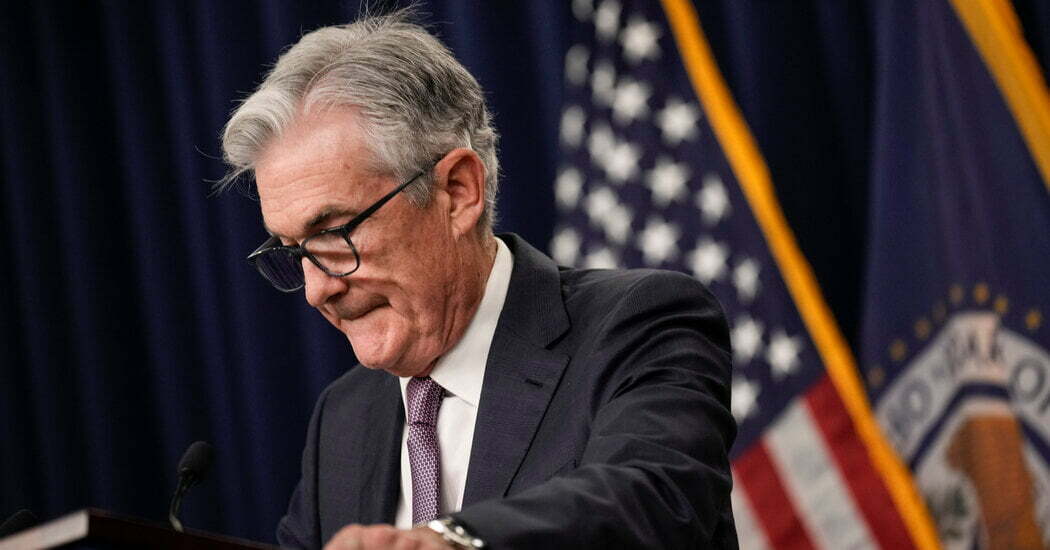On Wednesday, stocks wavered but ultimately ended the day lower after Federal Reserve Chairman Jerome H. Powell dashed investors’ hopes that the end of the central bank’s rate hikes could be over soon.
The S&P 500 fell by 2.5% on the day after the latest Fed decision, but it had been fluctuating between gains and losses during Powell’s afternoon news conference.
Stocks opened lower today as investors anticipated another 0.75% interest rate increase from the Fed. The Fed declined to raise rates, but investors’ attention quickly shifted to speculating on what future rate hikes could mean for stocks in the near future.
In this statement, the Federal Reserve noted that even though it had already raised rates significantly, those rates probably still don’t reflect the economic effect of previous rate rises.
Soon after Powell’s statement came out, the S&P 500 shot up, moving into a positive range. However, the rally quickly fizzled out as Mr. Powell launched his public comments, repeating that the central bank “still has ways to go” before it finishes increasing rates, blaming the inflation for staying stubbornly high, and suggesting that rates may need to rise more in cost as a result.
He said it was too early to talk about pausing rate increases. Investors responded swiftly, causing the S&P 500 to drop significantly. The yields on government bonds, which had been going down earlier in the day, went up in the late afternoon. The two-year Treasury yield, which is sensitive to changes in Fed policy, ended 0.06 percentage points higher at 4.59 percent.
The Federal Reserve’s Interest Rate Hikes
When the Federal Reserve raises the fed funds rate, various borrowing costs go up. This directly affects banks that have to pay more to lend money. Banks then increase rates for their borrowers, which can have a domino effect on other interest rates.
Consumer loans are likely to see a rise in rates over the coming year. Consumers should prepare for higher monthly payments on revolving debt like a credit card. Car loan rates will also increase in the coming year. Student loan borrowers should expect similar increases.
Mortgage rates can’t be indirectly influenced by the Fed Fund Rate, and instead follow the Treasury 10-year yield. Mortgage rates for a 30-year fixed-rate mortgage are up to 6% right now, according to Freddie Mac.
Banks. The Federal Reserve increased the benchmark interest rate recently, which means that banks may pay more on deposits in the future. In general, bigger banks are less likely to pay consumers more and online banks have already raised rates on some of their accounts.
Rob Waldner, the chief fixed income strategist at Invesco, said, “If you’re the guy who constantly asks if we’re nearly there when we actually are, then strap on tight because we’re going to be taking a trip.” That just grabs my attention.
On Thursday, Asian markets fell as the decline in the main U.S. stock indices persisted. In the middle of the day, the benchmark indexes in Australia and Hong Kong both fell 2%.
Experts expected on Wednesday that there might be a potential easing of the pace of rate hikes.
The S&P 500 rose by about 8% in October, partly due to better-than-expected earnings and because some investors believe that a shift in Fed messaging is coming.
Powell talked about the need to eventually rein in interest rates at some point, but the bottom line for investors was that the Fed’s focus remains focused on inflation.
Investors were surprised by the Fed’s announcement because they didn’t know what would happen next. They weren’t sure how high rates would go, how long they’d stay that high, or what the Fed would need to see in order to change course.
Chief global economist, Seth Carpenter, from Morgan Stanley said before Powell’s news conference that he also awaited more details on when the Fed might see fit to stop raising interest rates.
Powell noted that the Fed’s initial statement, released before his comments, said the central bank is trying to get to a point where inflation will eventually fall. That suggests that inflation may not need to be back at 2% but could just slow down, as it has in recent months.
Vivek Shankar contributed to this report.







